Special Report
27 Simple Tips to Reduce Sugar Intake and and Boost Your Health

Published:

Sugar consumption, which has grown from 130 million to 178 million tonnes globally in the last 10 years, has become a major health concern all over the world. Its negative health effects, such as contributing to obesity and diabetes, are a major reason that many health organizations set curbing sugar intake as a goal.
24/7 Tempo reviewed information on healthy eating habits from various sources to compile a list of 27 ways a person can significantly cut sugar consumption.
The World Health Organization recommends that no more than 10% of a person’s total energy intake would be added sugar, but ideally it should be less than 5%. For the average American, that would mean about 25 grams of sugar, or about 6 teaspoons. But Americans consume a lot more — about 22 teaspoons of sugar a day on average for adults.
Sugar adds no nutritional value and is loaded with calories. Consuming more calories than necessary can of course contribute to weight gain as well as inflammation. Cognitive impairment, especially dementia, is also a possible result of obesity, according to research from the Global Neuroscience Initiative Foundation.
Paying attention to how much sugar a person is consuming — and possibly reducing the amount — is a recommended strategy for maintaining a healthy lifestyle. While cutting back may be hard, it’s not impossible with a few simple tricks. But it also involves knowing what to avoid — these are 20 foods and drinks you only think are healthy.
Click here to learn about ways to cut sugar and boost your health
To compile a list of ways to reduce sugar intake, 24/7 Tempo reviewed information on healthy eating habits from sources such as Harvard School of Public Health, American Heart Association, the National Institutes of Health, and other sources.
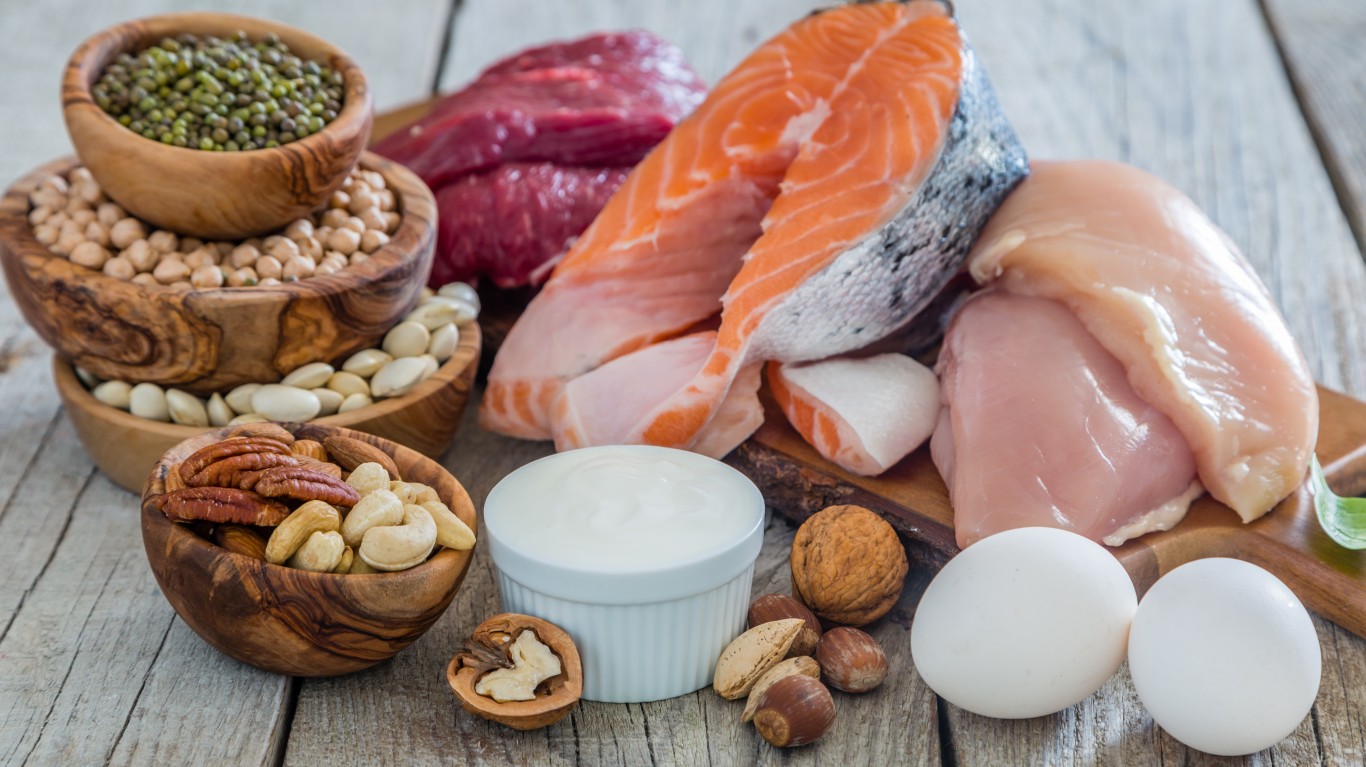
1. Increase protein consumption
Eating more protein may help keep food cravings, including for sweet stuff, to a minimum because it helps the body feel full for longer. A study observing obese men, published in the journal Obesity, found that those who switched to a low-calorie diet with high levels protein felt fuller and had less desire to eat late at night than those who had a low-calorie diet with normal levels of protein. Research in overweight teenage girls showed that eating more protein at breakfast reduced post-meal cravings for both sweet and savory snacks as well.
[in-text-ad]

2. Opt out for green produce
It probably won’t come as a shock that one of the many health benefits of leafy greens is fighting off sweet cravings. Green produce, and vegetables in general, are rich in different kinds of vitamins and minerals. They help the body feel satiated, thus keeping our sweet tooth in check. Leafy greens are high in fiber, which slows the absorption of sugar and helps maintain normal blood sugar levels.

3. Eat some fruit
No doubt, a sweet tooth is hard to handle. Pies, cakes, and cookies often look delicious. So if you find the temptation too hard, head for the fresh fruit section of the store. Yes, fruits have sugar, but it’s a natural sugar, and fruits have health benefits from all the vitamins and minerals they contain. Some fruits contain more sugar per cup than others, including grapes, mangoes, cherries, pears, and watermelon.

4. But avoid dried fruit
Though fruits have natural sugars, dried fruit often has added sugar. Most dried fruits, which are a more concentrated source of nutrients, are more than 50% sugar. Dried fruits are more energy-dense and contain significantly more sugar — and you’re missing on the water content that makes you feel fuller.
[in-text-ad-2]

5. Chew gum
Eating less sugar may be as easy as chewing sugar-free gum. Researchers at the Pennington Biomedical Research Center and Louisiana State University observed 115 adults who chewed gum on a regular basis. On two occasions, researchers fed them lunch, then offered them snacks three hours later. During one trial, they chewed gum once an hour, in the other they did not. When they chewed gum, the participants were much less hungry and had a significantly decreased feeling of craving something sweet.
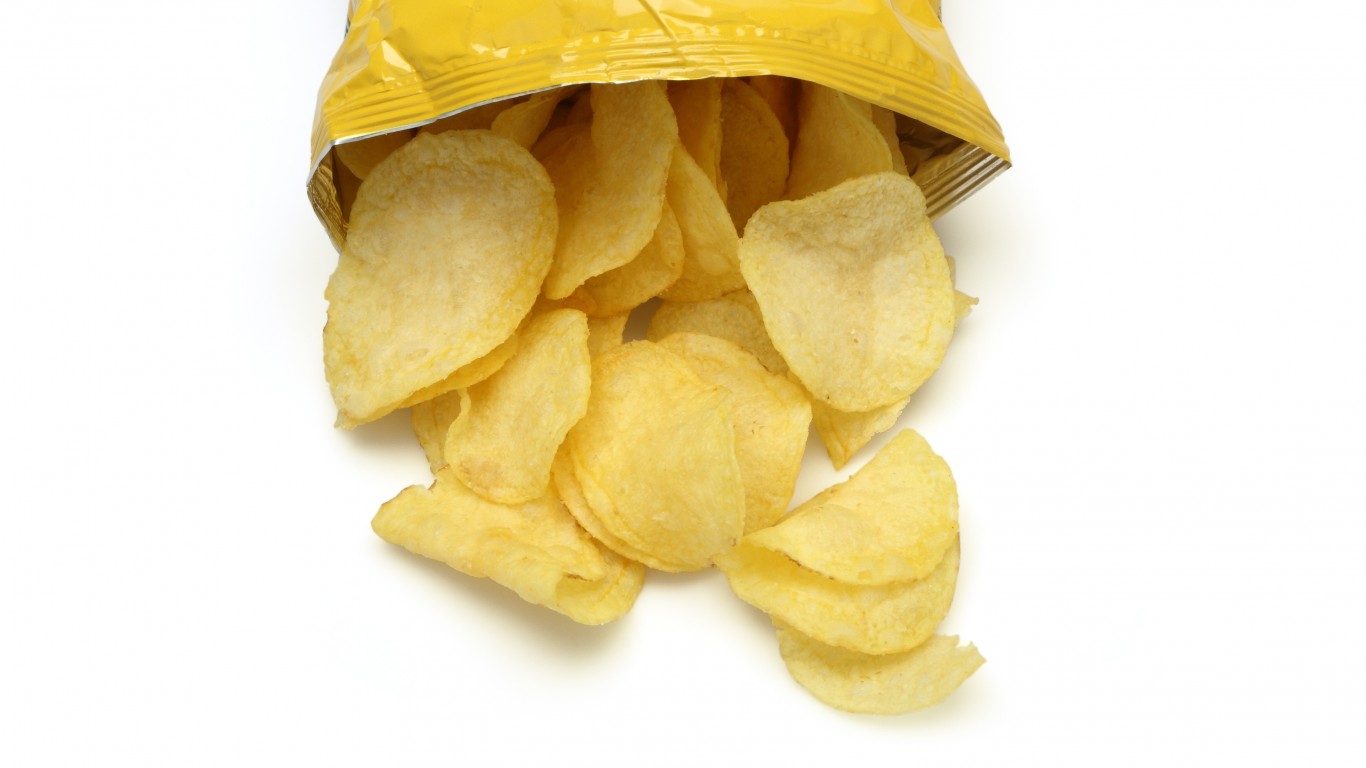
6. Avoid stress triggers
Prolonged and intense stress causes physical symptoms you may not realize are related to the stress. One example is disrupted eating behavior, more specifically eating when you’re not feeling hungry. When stressed, many people reach for calorie-dense foods high in sugar and fat. The reason may be, according to one small study published in the Journal of Clinical Endocrinology and Metabolism, that sugar reduces levels of the stress hormone, cortisol, in women.
[in-text-ad]
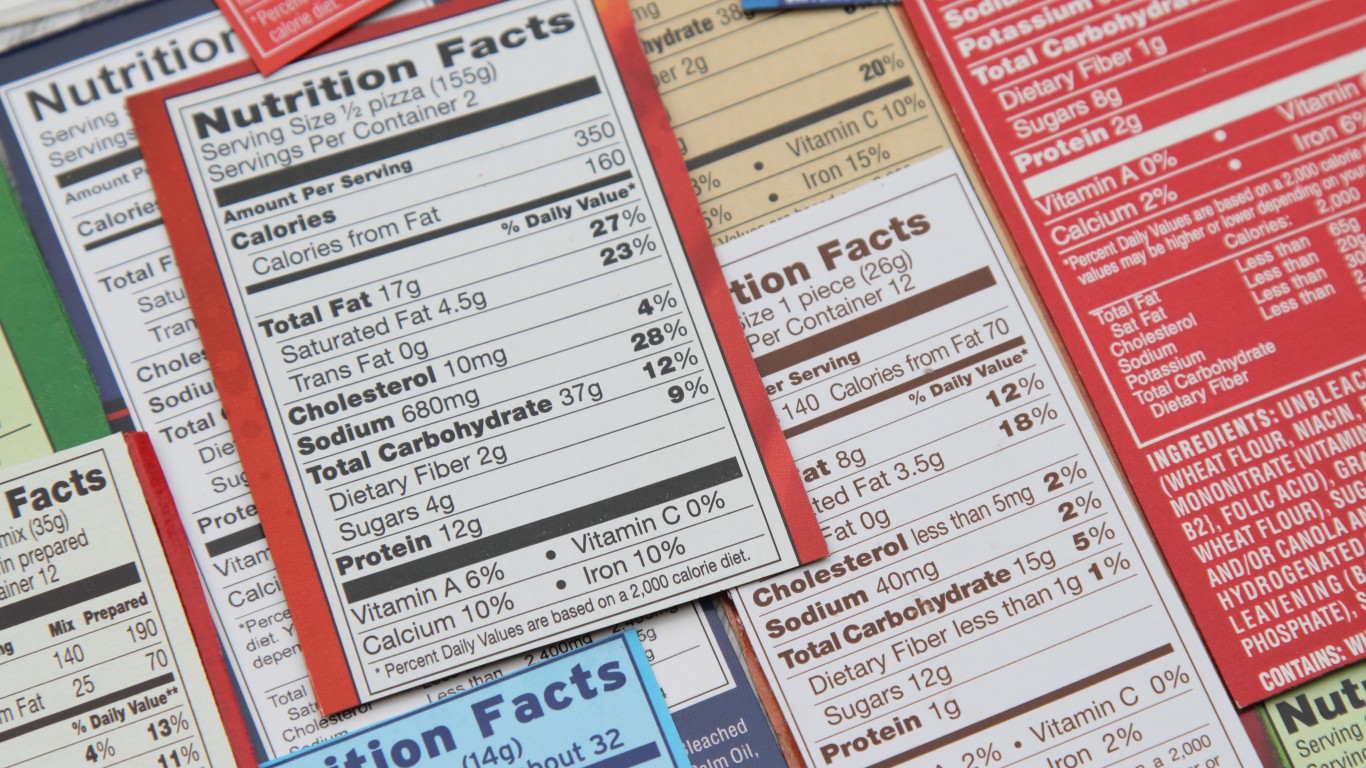
7. Pay attention to the labels
Sugar comes in many forms and has many names — at least 61. Any ingredient that ends in “-ose” — sucrose, glucose, fructose — most likely means sugar. Corn syrup, agave nectar, barley malt syrup, or dehydrated cane juice mean sugar, too. Food labels provide the amount of sugar in grams per a certain serving. If you want to get a better idea of what the grams mean, divide the grams of sugar by 4 to get the approximate amount of sugar in teaspoons. (There are about 4 grams of sugar per teaspoon).

8. Don’t starve yourself
It will be very difficult to find a doctor or nutritionist who would recommend deprivation as an effective way of maintaining or losing weight. The more you think about how you should not eat certain foods, the more you want them. One study that observed more than 100 female college students found that those who deprived themselves of eating chocolate consumed more chocolate food, once they had it, than did any other group. Researchers concluded that deprivation leads to cravings and overeating.

9. Sleep more
When a person is sleep deprived, it can affect the way he or she burns energy in part because of the effect sleep has on leptin, an appetite-inhibiting hormone, and ghrelin, an appetite stimulating hormone, according to a study. Less leptin and more ghrelin explain why sleep-deprived participants were hungry more often. Some research has shown that people who extended the amount of time they slept consumed less sugar.
[in-text-ad-2]
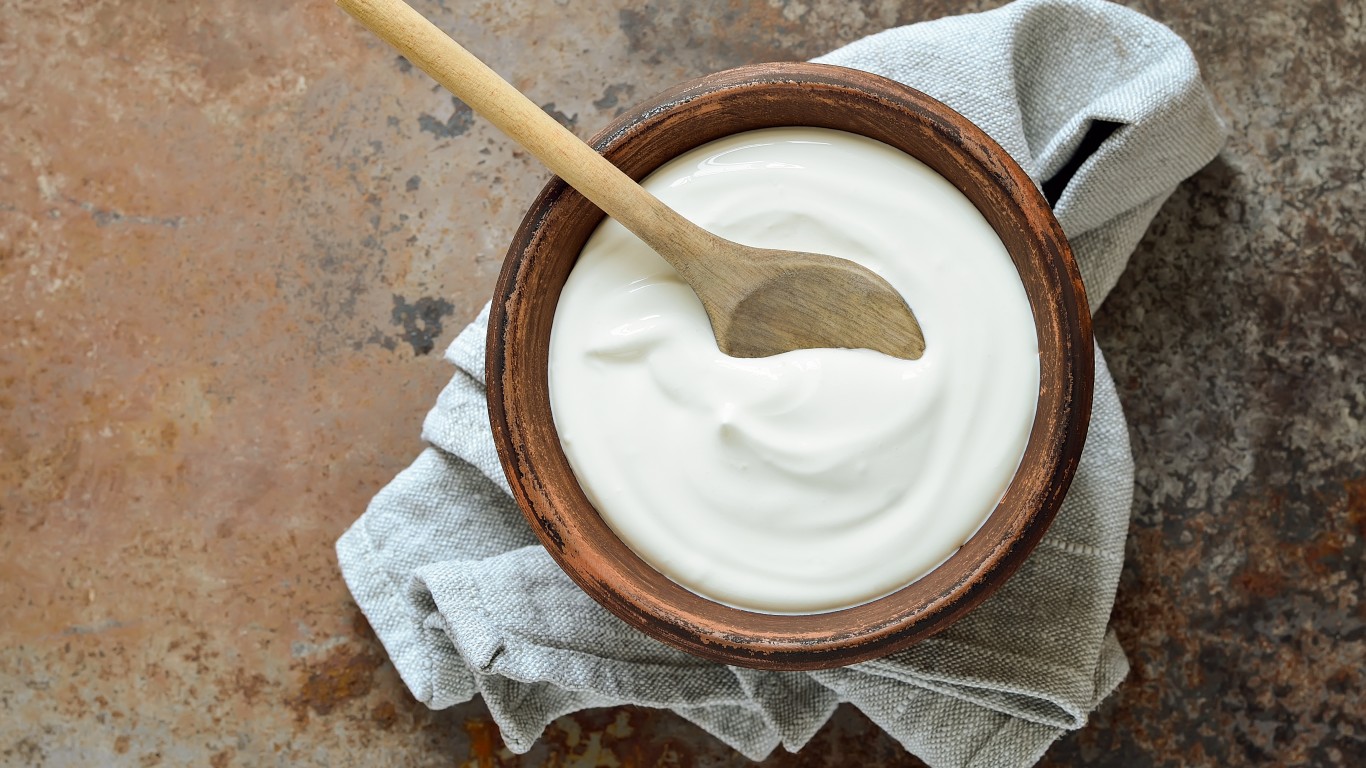
10. Choose plain yogurt
Yogurt is a good source of protein. But the seemingly endless selection of different kinds of yogurt at the store can be confusing. It’s best to keep it simple and go with plain yogurt. Yes, it has sugar, but the flavored kind has much more. The fruity yogurt contains about 27 grams of sugar per 6-ounce serving compared with plain, which has no added sugar. If you want sweet yogurt, get some fresh fruit.

11. Go for a walk
Walking, and exercising in general, will at least take your mind off sweet cravings. Even a 15-minute walk will do the trick, according to a small study. Overindulging in sweet snacks is sometimes a coping mechanism for stress, but exercising is, too. Exercising also helps release endorphins, which trigger a positive feeling in the body and make you happy.
[in-text-ad]

12. Drink more water
When you feel hungry, you may actually be thirsty. About 37% of people mistake hunger for thirst because thirst signals can be too subtle, according to clinical studies. So before you reach for the candy bars, try drinking some water.

13. Have some tea
You can try to experiment with ways to make water more appetizing. Add some fruit to the water to give it a natural flavor or make some tea. If you want (naturally) sweet teas opt for unsweetened dessert teas like cinnamon.
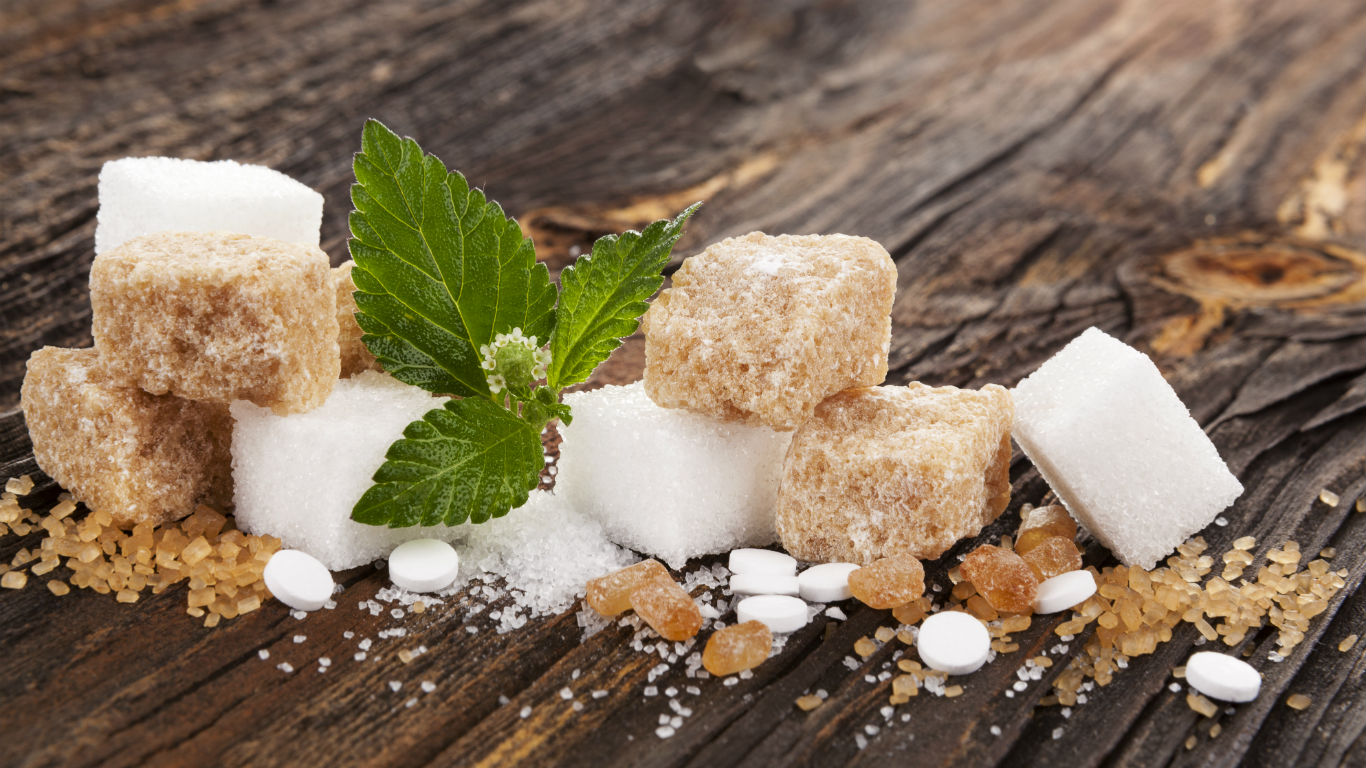
14. No more low- or non-fat foods
Low- or non-fat foods sound appealing. Fat is usually a bad word and nobody wants to consume a lot of it. Many companies remove the fat from their products, but in the process much of the flavor is lost too. To make them taste better, the companies fill them with artificial sweeteners or sugar. Low-fat foods may have fewer calories, but they tend to have higher sugar content. Read the labels. If you see many sugar and additive ingredients, put the product down and walk away.
[in-text-ad-2]
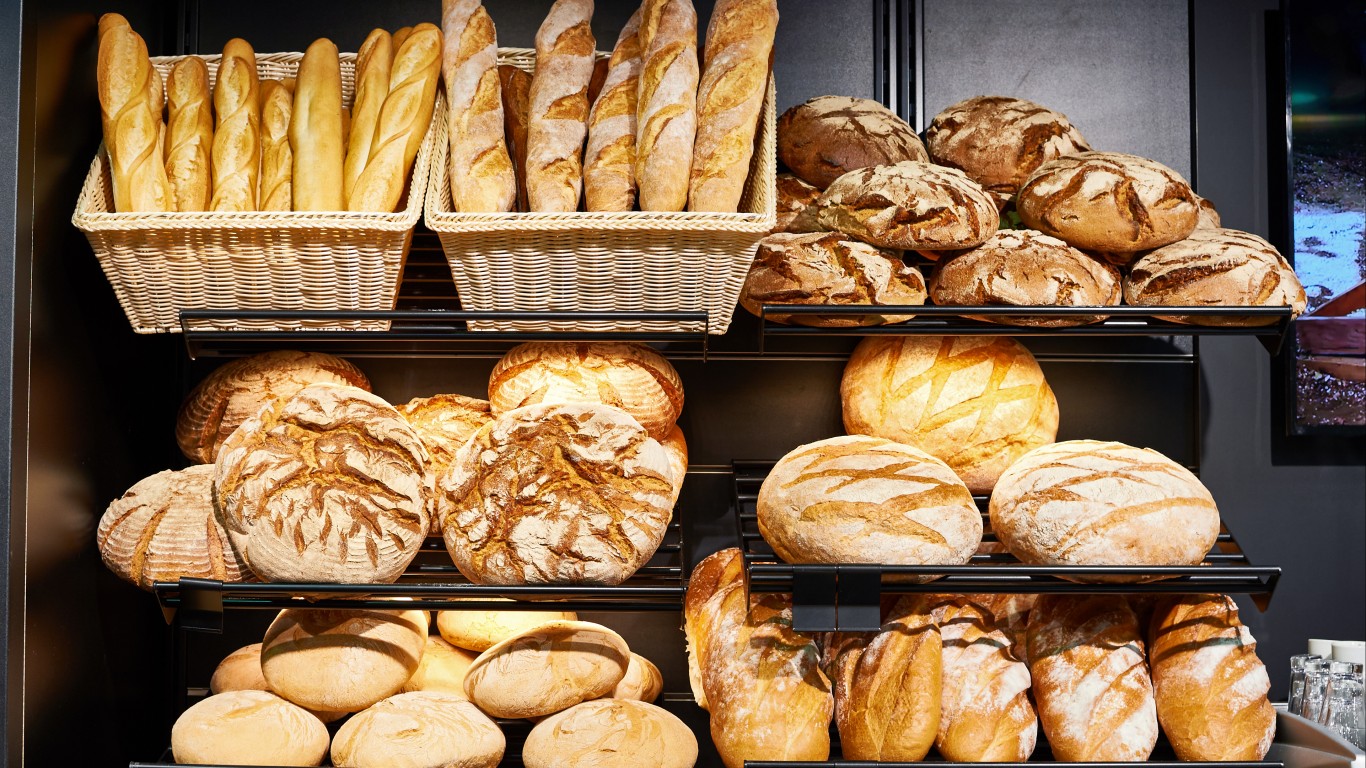
15. Watch what kind of bread you’re eating
Bread can be a sneaky source of sugar. It may not taste sweet, but that doesn’t mean it’s low on sugar. Sugar is often added to many packaged breads as a preservative to keep the product fresh and soft for as long as possible. Ingredients are listed by weight. So the farther down the list sugar is listed, the less of it is in the bread. Also, if you see names like corn sweetener, any type of syrup, cane juice, or honey, they mean “sugar.”

16. Eat before you go grocery shopping
The idiom “your eyes are bigger than your stomach” was probably thought of for people who go grocery shopping while being very hungry. They tend to buy ready-to-eat foods because they feel too hungry to take the time to cook. And the pre-packaged item — including salads, sandwiches, and even frozen pizza — that we get on an impulse are usually high in sugar as well as salt.
[in-text-ad]
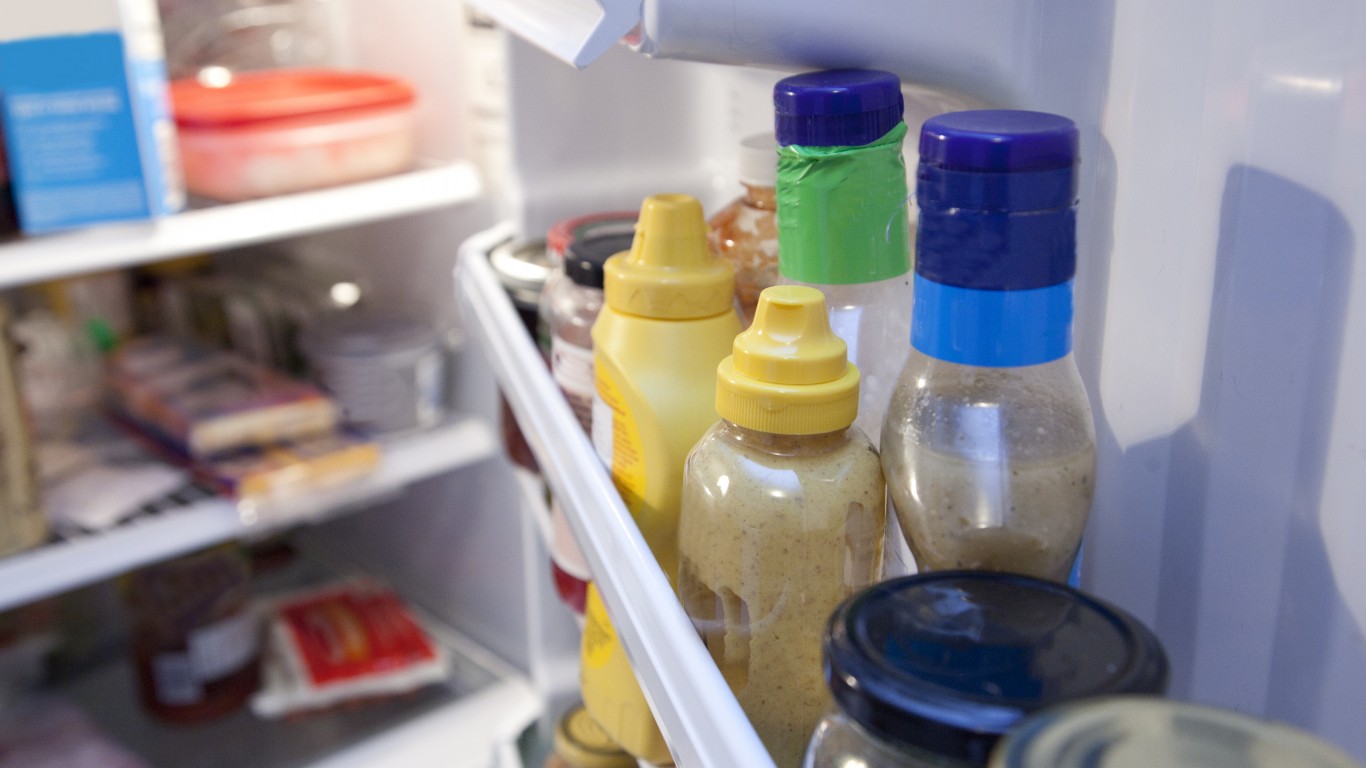
17. Lay off the condiments
Few people would argue that ketchup, mustard, or barbecue sauce don’t make almost any type of sandwich better. Condiments add great flavor, but they should come with a warning — they are loaded with sugar. A single tablespoon of ketchup or barbecue sauce has 3 grams of sugar, as does a tablespoon of tartar and teriyaki sauce. A tablespoon of pickle relish has 4 grams of sugar.

18. Brush your teeth
Brushing your teeth is a great way to avoid snacking. Once your mouth feels clean and fresh after brushing, you’ll probably be less likely to ruin that nice feeling by eating a snack, especially since sometimes the food simply doesn’t taste good (orange juice, anyone?) An ingredient in toothpaste — called sodium lauryl sulfate — changes the way taste buds process certain flavors. Using a mouthwash may do the trick as well. Lowering the risk of cavities comes as a bonus.

19. Clean out your cabinets
Out of sight, out of mind. It’s simple — if you don’t have a chocolate bar in your home, even if you’re thinking about it — you can’t eat one. So clean out the kitchen cabinets and any other places you might be hiding a stash of sweets for emergency situations. Make it easier for yourself to choose healthier and more nutritional foods by having them as your only immediate option.
[in-text-ad-2]

20. Forget about diet soda
Diet sodas usually mean fewer, if any, calories. But the sweet taste in diet sodas comes from artificial sweeteners. Such sweeteners may not be natural but they are sweet, and as such they encourage sugar cravings and sugar dependence because our flavor preferences are shaped by repeated exposure. Artificial sweeteners can also increase appetite, encouraging a sweet tooth, according to Swedish researchers, the Karolinska Institute.
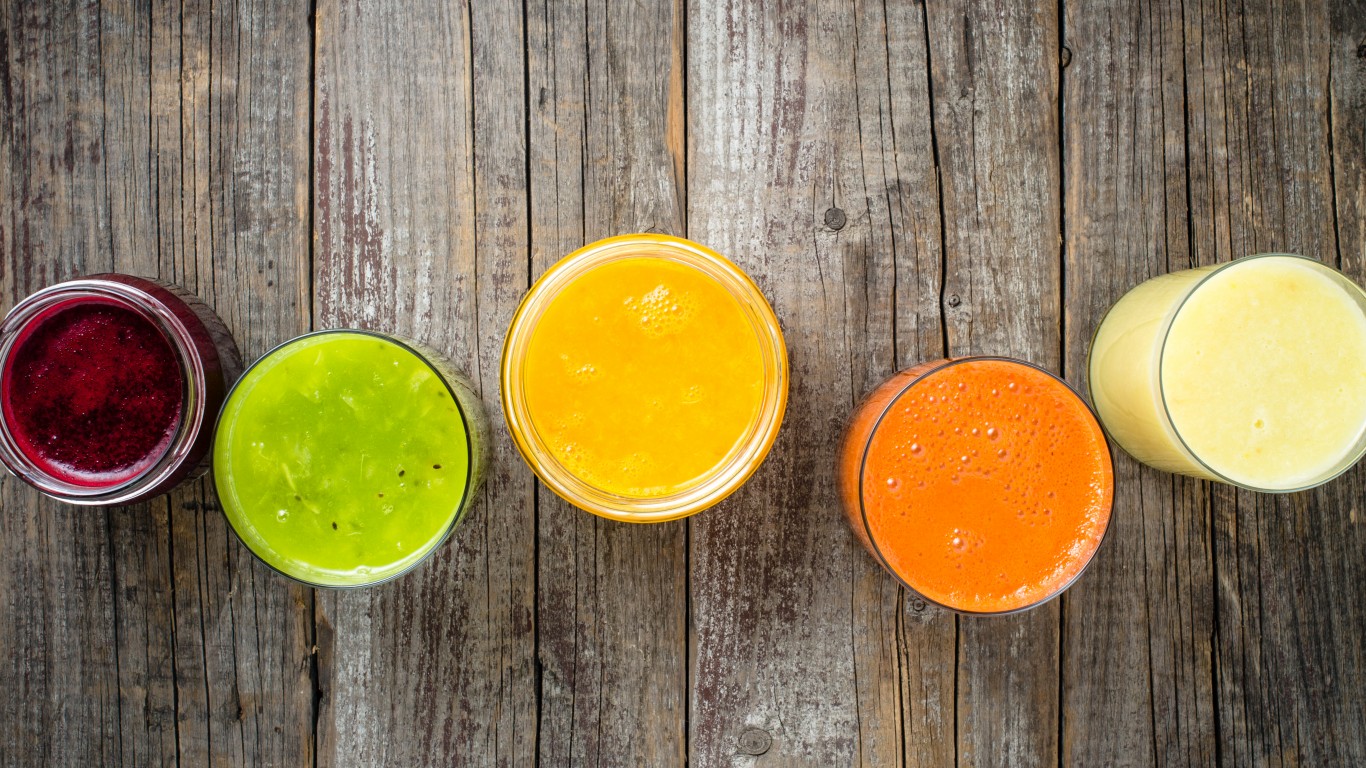
21. Forget about fruit juice, too
When an orange — or any fruit — is processed into juice, much of its healthy nutrients are lost and are replaced by sugar. In addition, juices don’t have the same levels of fiber that fruits do. Fiber can help reduce blood pressure and inflammation and control blood sugar levels.
[in-text-ad]

22. No more energy drinks
Energy drinks are notorious for their caffeine content. Some people also focus on how many calories they have. The amount of sugar in those drinks also shouldn’t be ignored. For example, just one can of Red Bull contains 37 g of sugar — or about 9 teaspoons of sugar — more than the recommended amount of sugar in a day. The American Heart Association recommends about 6 teaspoons per day for women and 9 teaspoons per day for men.

23. Use naturally sweet spices
There are ways to get your sweet tooth fix without consuming any amount of refined sugar. Try adding some naturally sweet spices — like nutmeg, vanilla, ginger, and cinnamon — to your drink, coffee, or tea.
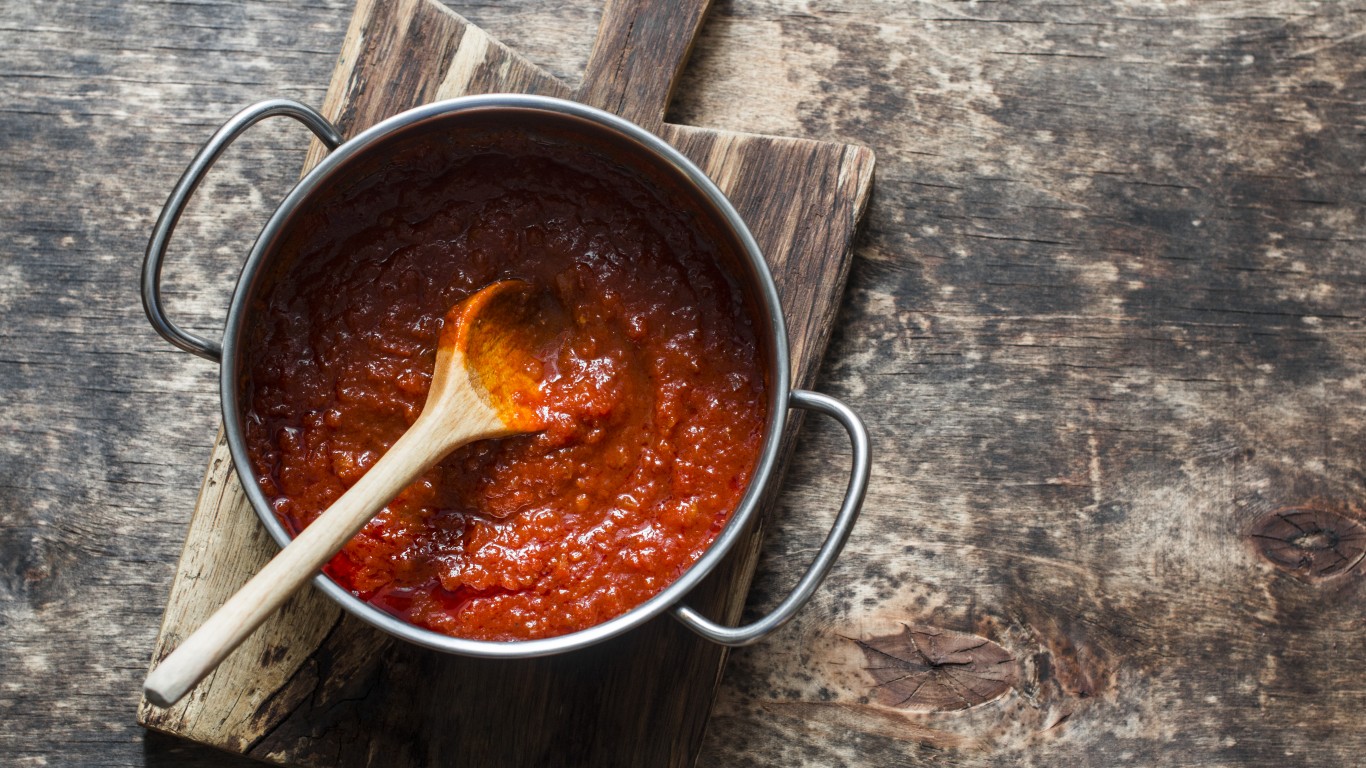
24. Don’t use store-bought pasta sauce
Many tomato sauces are sweet because of the natural sugars in tomatoes. Still, some companies add sugar to their products. Read the labels and recognize any sources of added sugar, a common one being high fructose corn syrup.
[in-text-ad-2]

25. Eat more healthy fat
Many people are afraid of the word “fat,” but they shouldn’t be. Healthy fats, such as those in full-fat dairy, fish, and nuts, have many nutritional benefits, like reducing cravings for simple carbs found in sweet foods like candy and cereal.

26. Maybe you need a multivitamin
Sugar cravings may sometimes be the result of an underlying nutritional deficiency. For example, cravings for chocolate may indicate you don’t have enough magnesium. Blood tests can often tell if a person is lacking certain nutrients, in which case a doctor may prescribe a multivitamin or a supplement.
[in-text-ad]

27. If you like chocolate, have the dark kind
Cravings for chocolate are very common. And if you’re going to indulge there is nothing wrong with that every once in a while, just opt for the dark kind with at least 70% cocoa. The darker the chocolate, the more intense the flavor and the less sugar it contains. And, of course, don’t eat the whole bar.
Thank you for reading! Have some feedback for us?
Contact the 24/7 Wall St. editorial team.